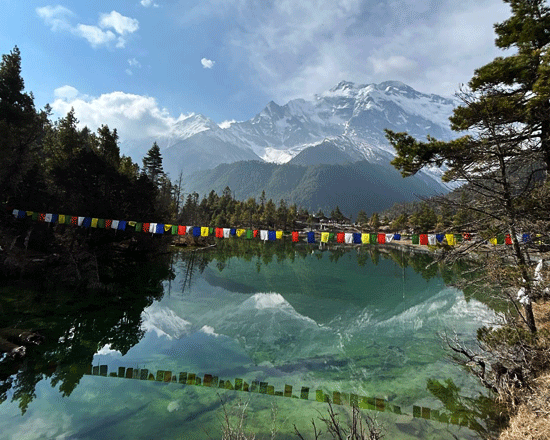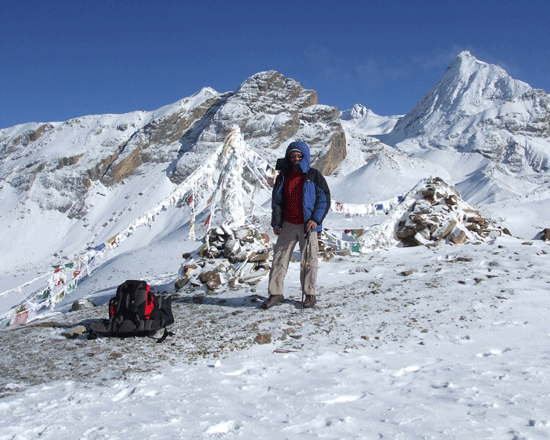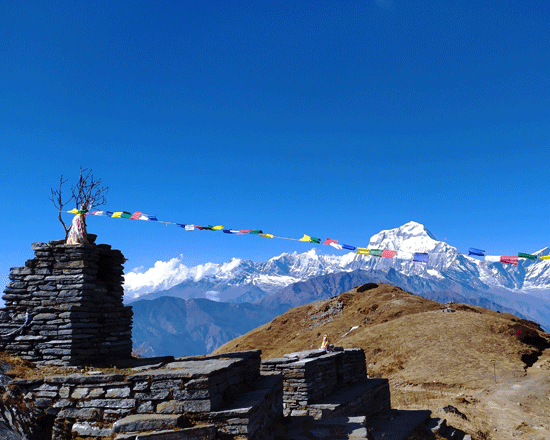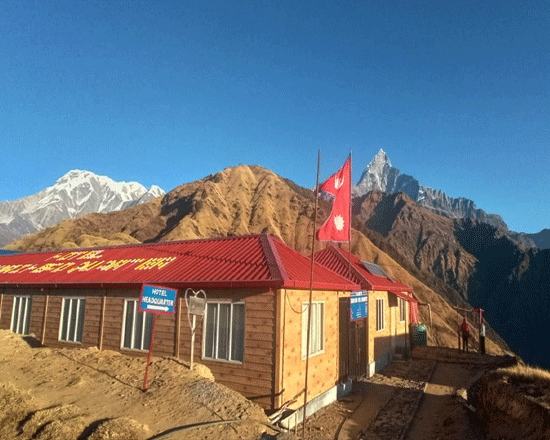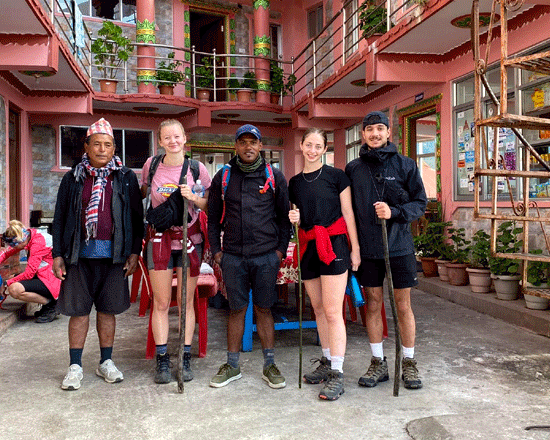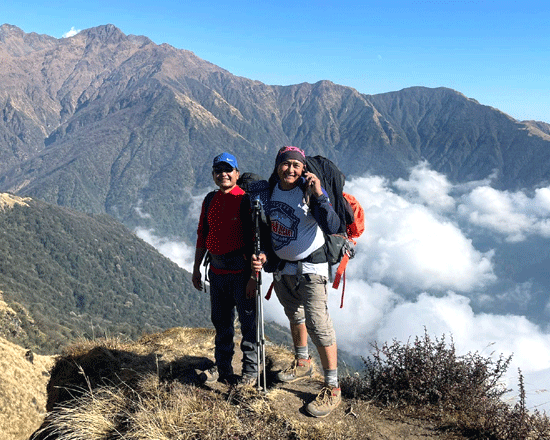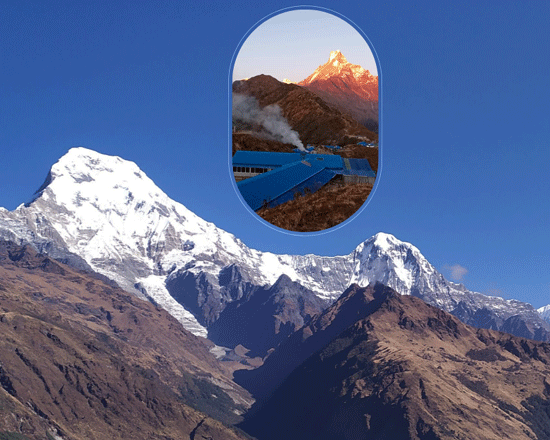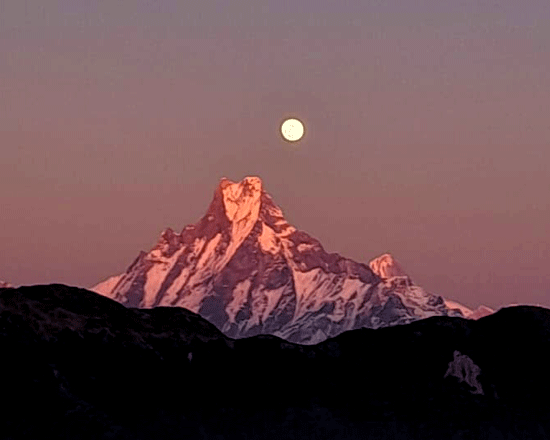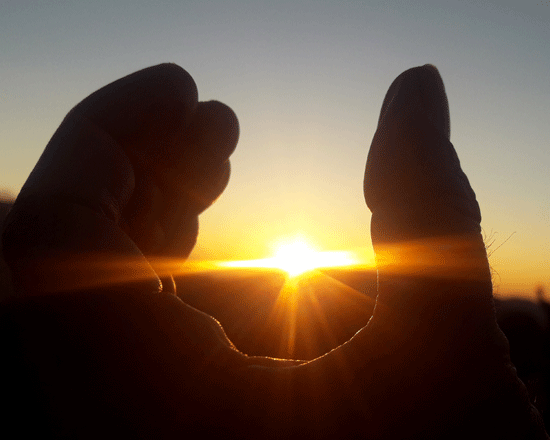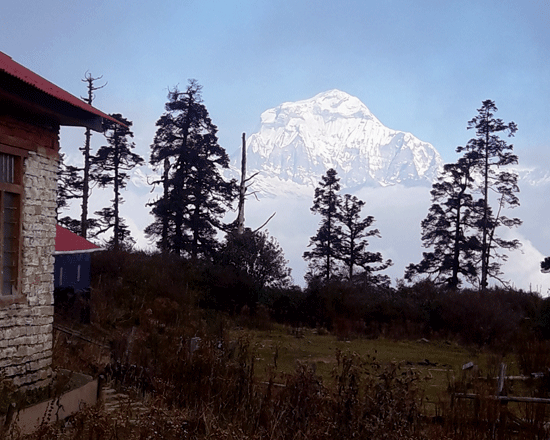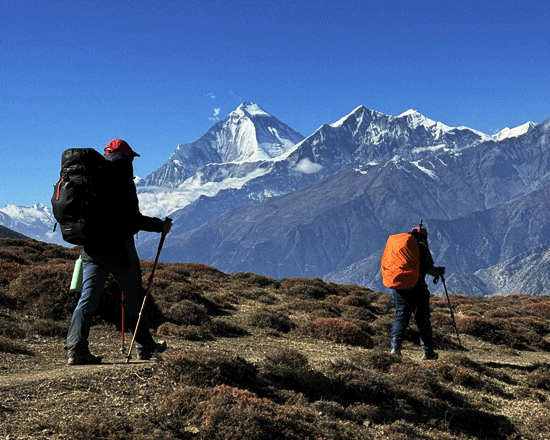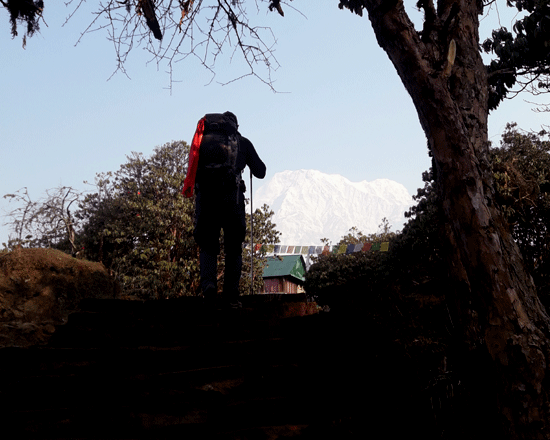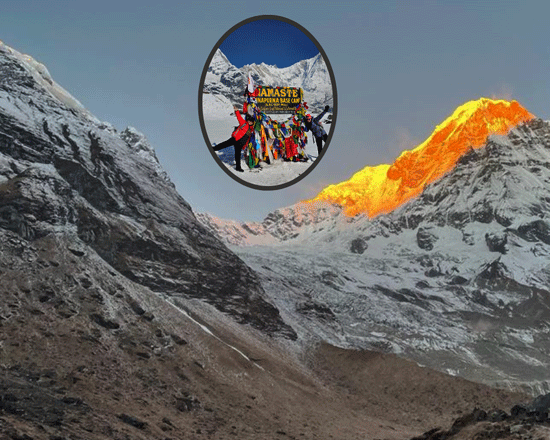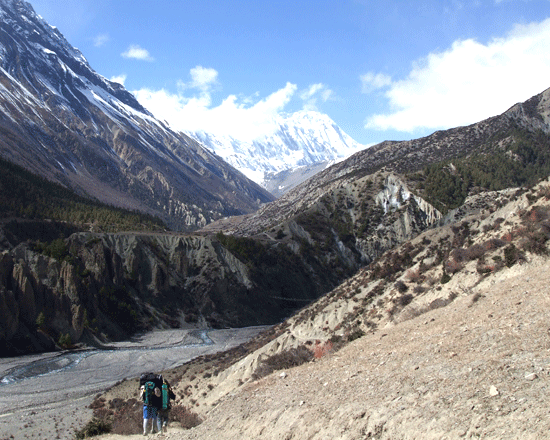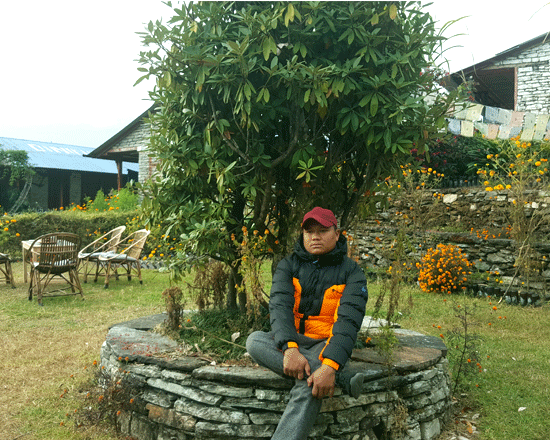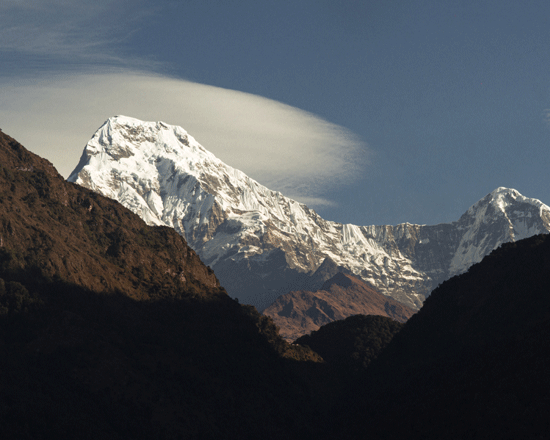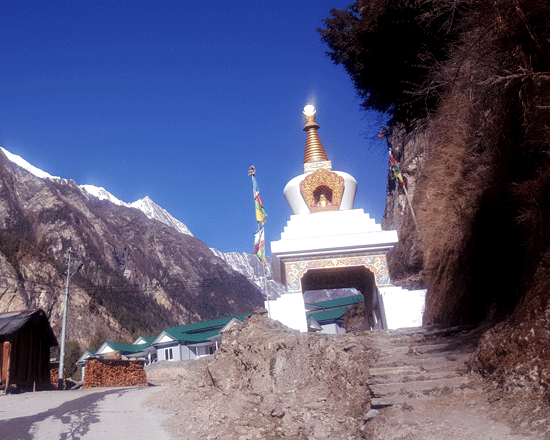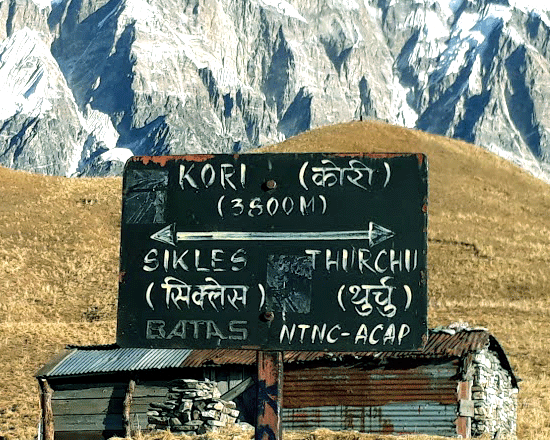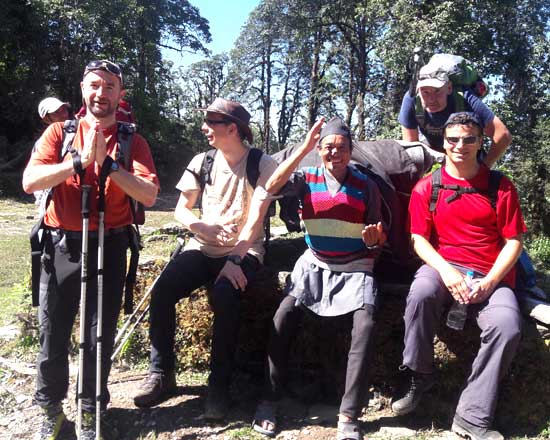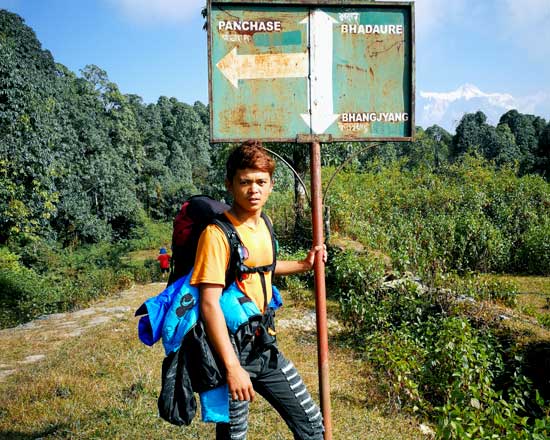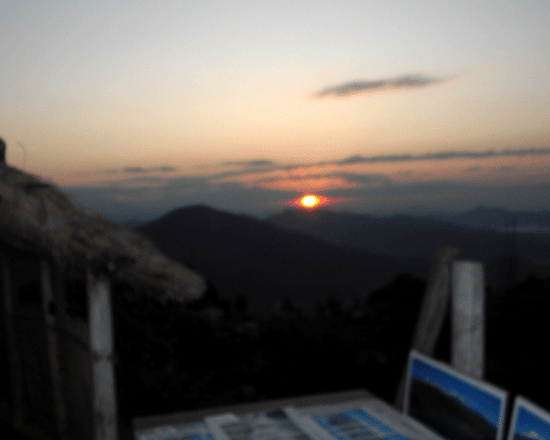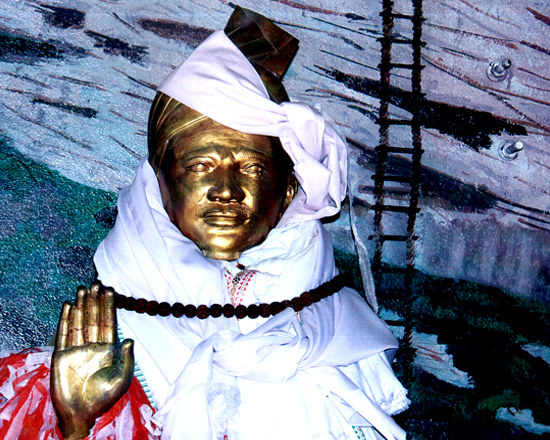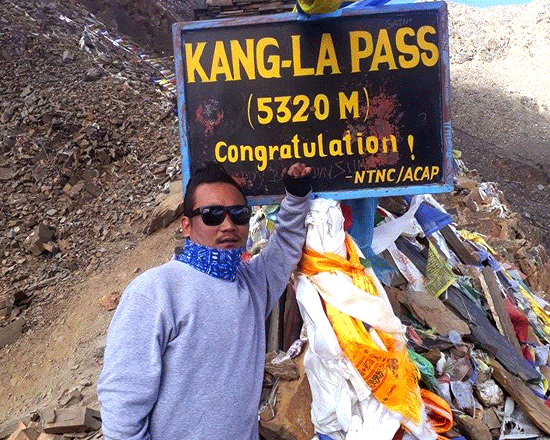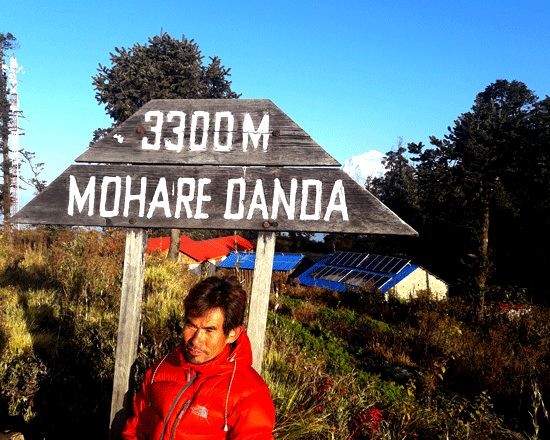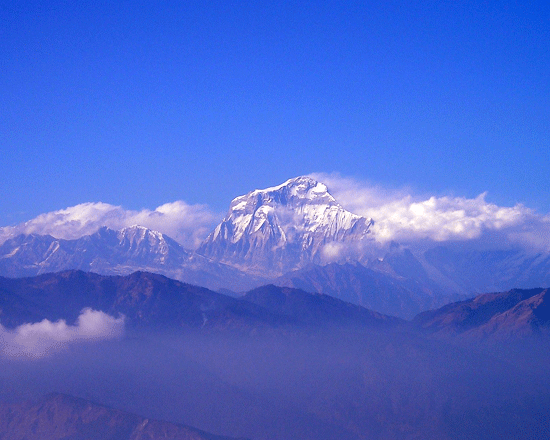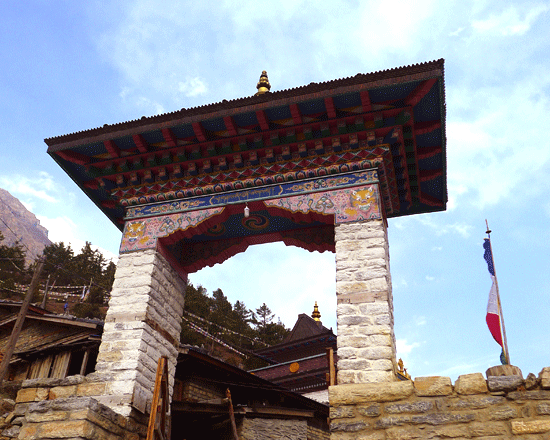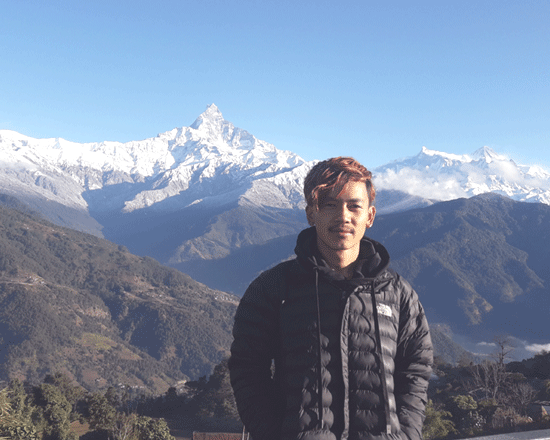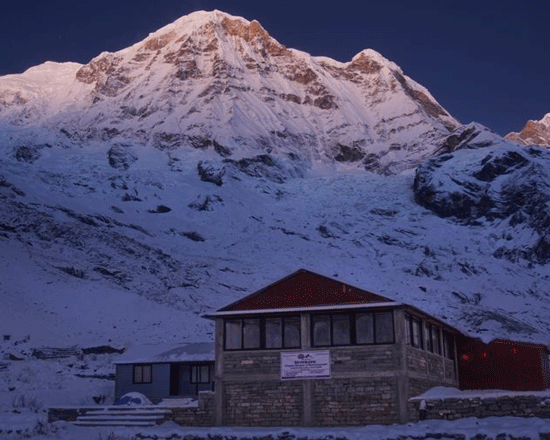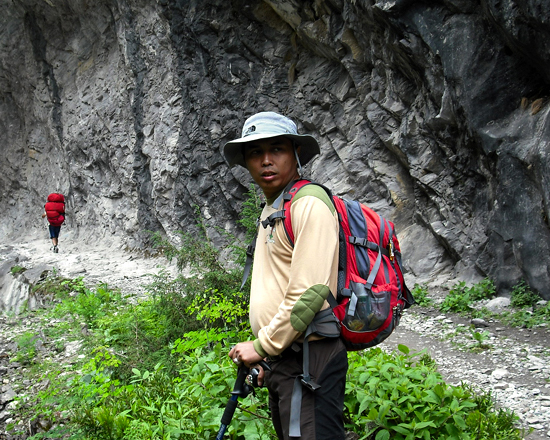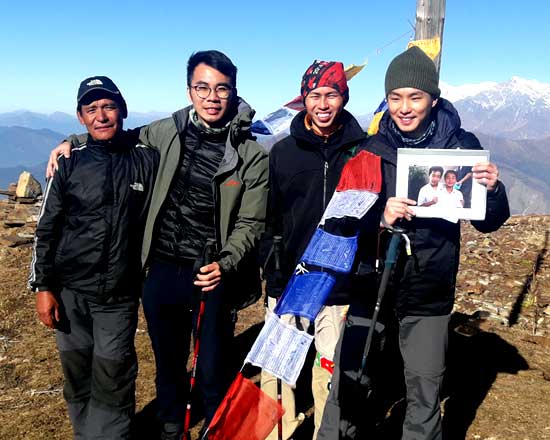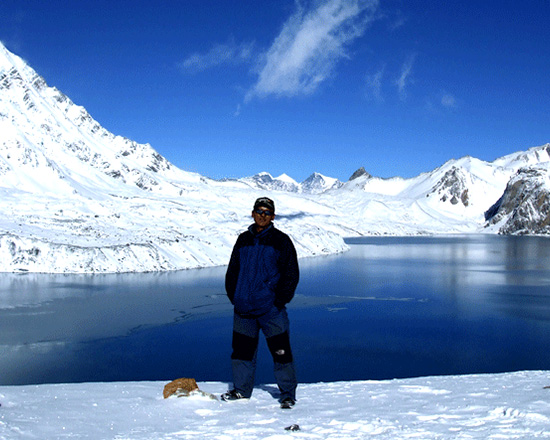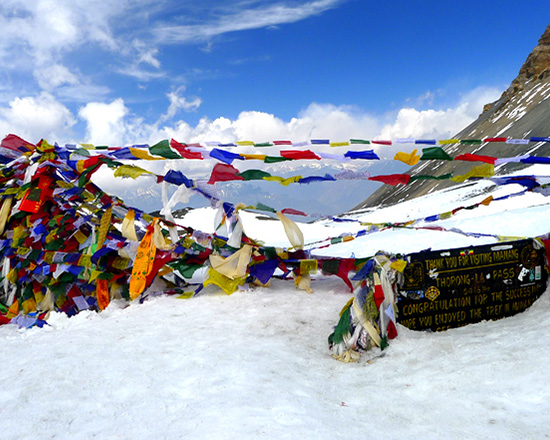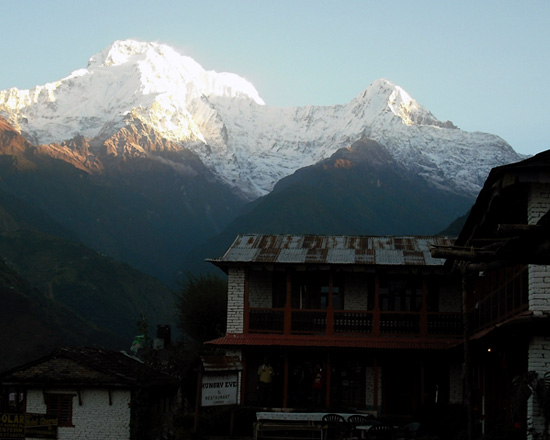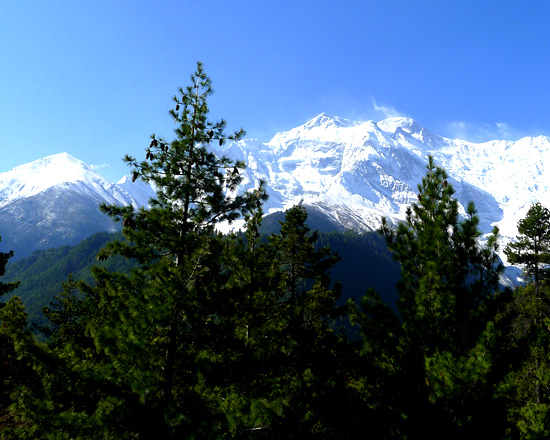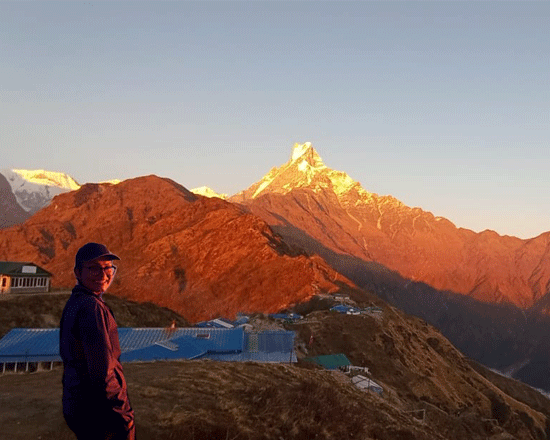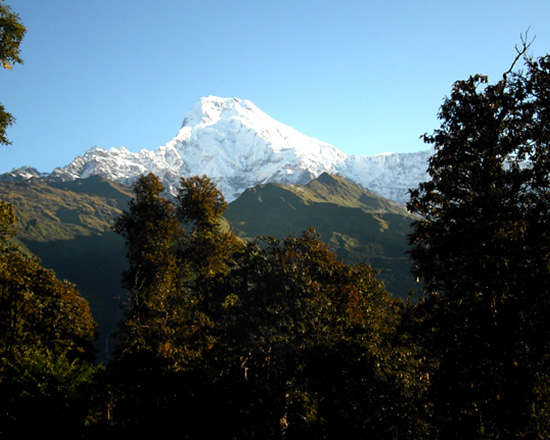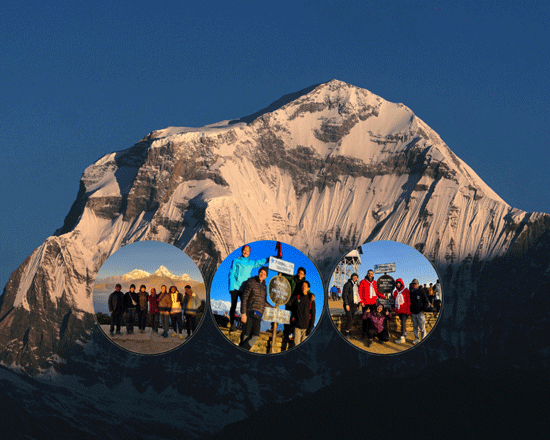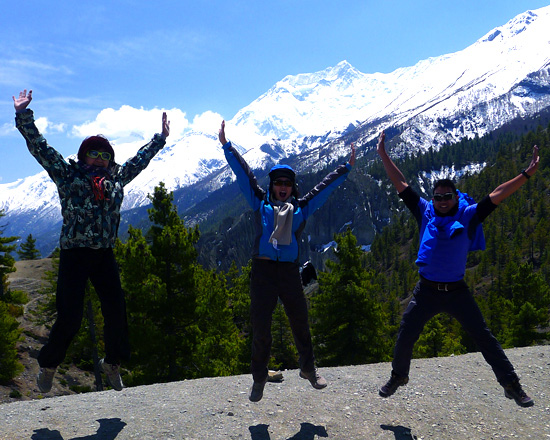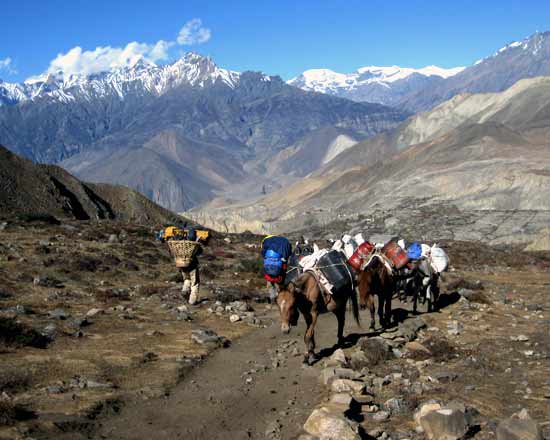Annapurna Region
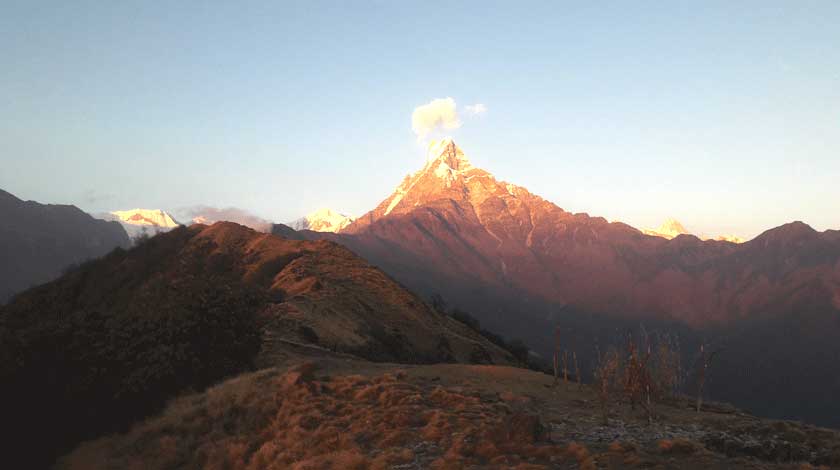
Annapurna Region Trek
Annapurna Region trek is ideal for its legendary area around and various Trekking routes, climbing peaks, and charming villages. The historic most prosperous Himalaya region bounded by the Kali Gandaki River on the west, the Marshyangdi River on the north and east.
Annapurna region trek is the fabulous mountain zone, connecting with Baglung, Kaski, Lamjung, Manang, and Myagdi. This region offers magnificent mountain vistas and a large Nepalese indigenous group vast Cultures.
Peoples and cultures
- Diverse Ethnic Communities: Indigenous group people inhabitant richer cultures land, mostly Gurung, Magar, Thakali, and Manangi, each with its own distinct culture, language, and traditions who are mainly Buddhist Bon Po and Hinduism.
- Flora and Fauna: The Annapurna Conservation Area is rich in biodiversity, featuring forests of rhododendron, oak, and pine, as well as wildlife like snow leopards, Himalayan tahr, and various bird species.
- Sacred Sites: The region is dotted with important religious sites, including temples, monasteries, and gompas, many of which are significant to both Hindus and Buddhists.
Trekkings
The Annapurna region trek is one of the most popular trekking destinations in Nepal and offers a variety of trekking options. Here are some of the most popular Annapurna region treks:
1. Annapurna Circuit Trek
- Duration: 15-20 days
- Max Altitude: 5,416 meters (Thorong La Pass)
- Difficulty: Moderate to Difficult
- Highlights: The Annapurna Circuit is one of the most famous trekking routes globally, known for its incredible diversity in landscapes, from lush subtropical forests to high alpine meadows and arid, desert-like terrain.
- The trek circles the Annapurna Massif and crosses the Thorong La Pass, offering panoramic views of peaks like Annapurna, Dhaulagiri, and Machapuchare.
- Cultural encounters with the Gurung, Thakali, and Manangi people, visits to ancient monasteries, and the pilgrimage site of Muktinath add to the trek’s allure.
- Best Time to Trek: March to June and September to December.
2. Annapurna Base Camp (ABC) Trek
- Duration: 7-12 days
- Max Altitude: 4,130 meters (Annapurna Base Camp)
- Difficulty: Moderate
- Highlights: The ABC trek is a direct route to the base camp of Mount Annapurna, the 10th highest peak in the world. It offers close-up views of Annapurna I, Annapurna South, Machapuchare (Fishtail), and other peaks.
- The trail passes through diverse landscapes, including terraced fields, rhododendron forests, and high alpine meadows.
- The trek is culturally rich, with stops at traditional Gurung and Magar villages, providing insights into the local way of life.
- Best Time to Trek: March to June and September to December.
3. Ghorepani Poon Hill Trek
- Duration: 4-5 days
- Max Altitude: 3,210 meters (Poon Hill)
- Difficulty: Easy to Moderate
- Highlights: The Ghorepani Poon Hill trek is a shorter, less strenuous trek, ideal for those with limited time or trekking with families.
- Poon Hill is famous for its sunrise view, offering breathtaking panoramic vistas of the Annapurna and Dhaulagiri mountain ranges.
- The trek is accessible and passes through beautiful forests, terraced fields, and charming villages, with opportunities to interact with the local Gurung and Magar communities.
- Best Time to Trek: Year-round, but the best views are during the spring (March to June) and autumn (September to December).
4. Mardi Himal Trek
- Duration: 5-7 days
- Max Altitude: 4,500 meters (Mardi Himal Base Camp)
- Difficulty: Moderate
- Highlights: The Mardi Himal trek is a relatively new and less crowded route, offering stunning views of Annapurna South, Hiunchuli, and Machapuchare.
- The trek takes you through pristine forests, rugged landscapes, and high ridges, ending at the base of Mardi Himal.
- The trail offers an off-the-beaten-path experience, with fewer trekkers and a more intimate connection with nature.
- Best Time to Trek: March to June and September to December.
5. Jomsom Muktinath Trek
- Duration: 7-12 days
- Max Altitude: 3,800 meters (Muktinath)
- Difficulty: Moderate
- Highlights: The Jomsom Muktinath trek is part of the Annapurna Circuit but can be done as a shorter, standalone trek. It follows the Kali Gandaki Valley, known for being the deepest gorge in the world.
- The trek offers varied landscapes, from the lush green hills near Pokhara to the arid, desert-like terrain of the Mustang region.
- Muktinath, a sacred site for both Hindus and Buddhists, is a significant highlight, along with the unique culture and traditions of the Thakali and Tibetan-influenced communities.
- Best Time to Trek: March to June and September to December.
6. Khopra Ridge Trek
- Duration: 7-9 days
- Max Altitude: 3,660 meters (Khopra Ridge)
- Difficulty: Moderate
- Highlights: The Khopra Ridge trek is a lesser-known route that offers stunning views of Annapurna, Dhaulagiri, Nilgiri, and other peaks.
- The trek includes a visit to Khayer Lake, a sacred high-altitude lake with spiritual significance.
- The trail is less crowded, providing a peaceful trekking experience with opportunities to experience local hospitality in the teahouses.
- Best Time to Trek: March to June and September to December.
7. Tilicho Lake Trek
- Duration: 15-20 days (often combined with the Annapurna Circuit)
- Max Altitude: 4,919 meters (Tilicho Lake)
- Difficulty: Moderate to Difficult
- Highlights: Tilicho Lake is one of the highest lakes in the world, located at the base of Tilicho Peak. The trek offers a challenging extension to the Annapurna Circuit.
- The trek provides a combination of cultural experiences and breathtaking landscapes, including the Marsyangdi Valley and views of the Annapurna range.
- The pristine, turquoise waters of Tilicho Lake against the backdrop of snow-capped peaks make this a rewarding trek for those seeking a bit more adventure.
- Best Time to Trek: March to June and September to December
8. Nar Phu Valley Trek: The Nar Phu Valley trek is a remote and less-traveled trek that takes you through traditional villages and over high mountain passes. The trek offers stunning views of the Annapurna and Manaslu mountain ranges and a chance to experience the unique culture of the Nar and Phu people.
These are just a few of the many trekking options in the Annapurna region. Each trek offers its unique beauty, culture, and trekking experience, making it a popular destination for trekking enthusiasts from around the world.
The most popular doable trekking are Annapurna Base Camp, Annapurna Circuit, Jomsom Muktinath, Kaligandaki valley, Mohare Danda, Ghorepani Poon Hill, Royal Trek, Khopra danda Trek, Mardi Himal, and Karbakeli Trek, Panchase Trek, Dhaulagiri Circuit.
Mountain Peaks
There are several peaks that are popular climbing for climbers, Tent Peak, Him Chuli, Dhampus Peak, Tilicho Peak, Chulu Far East, Pisang Peak in the Annapurna region, also some highest mountain expeditions over 8000 m are Dhaulagiri and Annapurna I.
Lakes
The Lap of the Annapurna region trek has so many lakes heritages, Fewa lake, Begnas Lake, and Rupa Lake in the Pokhara, in the Manang side is Tilicho Lake, Ice Lake, Upper Mustang has Damodar Kunda which is popular for the Hinduism pilgrims.
The Annapurna region is protected within the 7,629-square-kilometre inner Annapurna Conservation Area Project.
Trekking Tips for the Annapurna Region trek
- Permits: Trekkers need the Annapurna Conservation Area Permit (ACAP) and a TIMS (Trekkers’ Information Management System) card.
- Guides and Porters: Hiring a guide and/or porter can enhance your experience, providing local knowledge and easing the physical burden.
- Accommodation: Teahouses are widely available along the trekking routes, offering basic but comfortable lodging and meals.
- Altitude Awareness: Be mindful of altitude sickness, especially on treks that involve crossing high passes like Thorong La. Acclimatize properly and stay hydrated.
The Annapurna region trek offers an unparalleled trekking experience with its diverse landscapes, rich cultural heritage, and majestic mountain views, making it a must-visit destination for trekkers of all levels.

